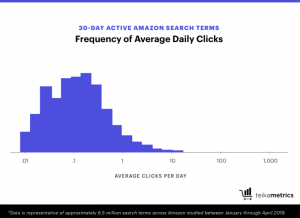 Presence to me is having a sense of poise and self-assurance, along with the ability to make others feel like they are the most important person in the room. It is that feeling of credibility a person conveys together with the air of authority even though in terms of position or status they may not actually have any.
Presence to me is having a sense of poise and self-assurance, along with the ability to make others feel like they are the most important person in the room. It is that feeling of credibility a person conveys together with the air of authority even though in terms of position or status they may not actually have any.
It’s a charisma in the form of a likability that immediately tells you that you’re in good hands.
Many presenters believe that presence is something you either have or you don’t. Those who subscribe to that theory generally focus on impressing their audience with content in the conviction that the information alone will be sufficient to win them over.
If you have a speech or presentation to give soon I’d like you to challenge that assertion and consider the possibility that presence is learned and it’s within your reach. I believe that there are 3 core elements to presence and each of them are readily obtainable:
1. Nobility
I don’t mean nobility in the aristocratic sense of the word. I mean a speaker who is magnanimous, honest and moral; noble to their cause. The route to nobility when presenting is through giving yourself to your audience. That means making it about them and not you.
It means being generous with your energy, insights and intent to make a genuine difference to their lives. The starting point is taking yourself off of ‘auto-pilot’ which means you stop presenting the way you’ve always done if it doesn’t serve your audience and help you to connect with them. To switch to nobility you need to focus on:
How you see your audience
– Some are mothers or fathers, all are sons and daughters and they are all creative, responsible and intelligent people who believe you can help them in some way.
– Busy professionals who have taken time out to listen to you because they are interested in what you have to say and they care.
– People who have fears, anxieties, hopes and aspirations just like you and they hope you will make a difference to them.
– Emotional beings who really don’t want to be lectured at and live in hope that you will help them to feel something.
How you act
– Standing and moving with purpose and confidence
– Using strong and meaningful hand gestures
– Active eye contact
– Congruence in the way your voice, body and face mirror your words
How you speak
– Animate your voice buy varying your pitch, tone, volume and pace
– Pause to help your message land with your audience
– Tell them stories
– Lose the corporate speak and let them hear the real you
How you look
– Dress for your audience. If they wear suits then you should too
– Pay attention to detail, polished shoes, well-groomed hair, distracting jewelry
– Look rested and healthy
– Smile and look confident
As you can see, your first priority is to act, sound and look like your audience are the most important people in your life in that moment. If you can’t do all 3 then do your audience a favour and find someone to present who can.
2. Awareness
Did you have a shower this morning?
It sounds like a strange question for an article on presentation skills but it’s relevant and important nevertheless. It’s a question we ask our delegates in every workshop.
Most people answer yes of course so we then ask a follow up question. Did you really have a shower or were you just in the shower?
There’s a difference.
Having a shower means noticing the feeling, temperature and touch of the water on your skin at each moment. It means feeling the texture and breathing in the scent of the shower gel and shampoo you use. That’s the level of awareness I’m referring to, try it next time you shower.
It’s the same with presenting. It’s my belief that many presenters aren’t really in the room when they are speaking. Their body might be there and their mouths moving but sometimes there is just a lack of awareness.
The best presenters know how to really be in the room with their audience.
– They arrive as early as they can and once they done the usual AV check they just get to know the room. They spend a few minutes just standing in the area and familiarise themselves with the space.
– They take a few moments to see things from their audience’s perspective and sit in as many of their seats as they can well before they arrive.
– Once everything is set and they are just waiting for their audience to arrive they sit quietly and meditate.
3. Purpose
A prerequisite to presence is purpose.
The Mindful Presenter knows that the most important element of their presentation is having absolute clarity about why they are speaking in the first place and what they hope to achieve. They know exactly what they want their audience to think, feel and do.
A presenter’s presence can only really be felt once they have acknowledged with certainty what it is they want their audience to:
Remember – Understanding isn’t the same as remembering. An audience can understand completely what it is you’ve just presented yet forget 90% of the information within 2 hours. When you are mindful of what you want your audience to remember you can begin to craft and deliver your message to ensure they do.
Feel – Whether you’re presenting at a team meeting, conference, board meeting or sales pitch your job is to help your audience feel something. Unless you feel it yourself it’s highly unlikely that your audience will.
Your presence will be felt by your intention.
“If your presence doesn’t make an impact, your absence won’t make a difference.” Trey Smith
I really hope you enjoyed this post. If you did, please feel free to share it through your preferred social media channels below and subscribe to our mailing list so you won’t miss any future posts.
Image: Courtesy of flickr.com
Business & Finance Articles on Business 2 Community(67)









